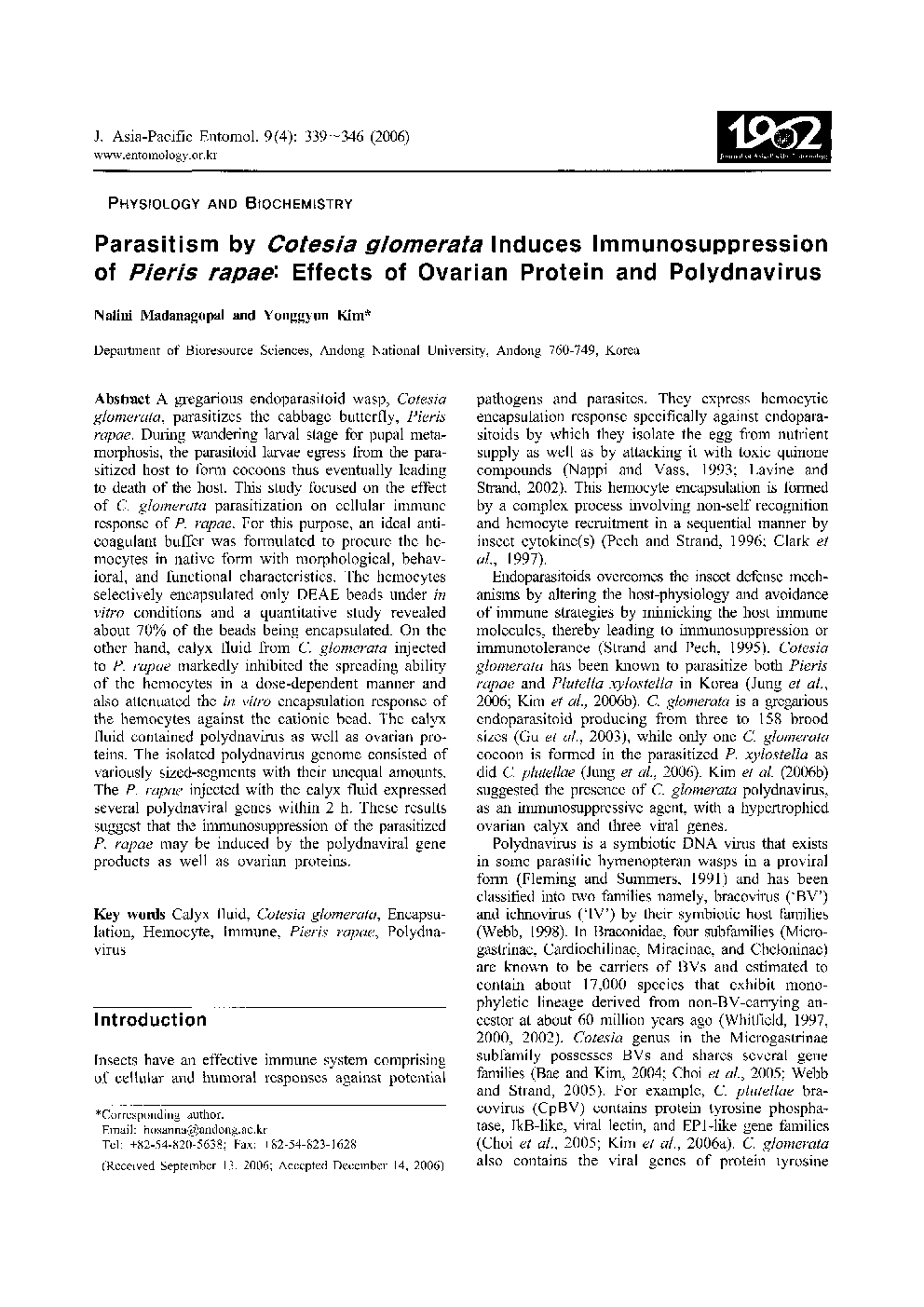| Article ID | Journal | Published Year | Pages | File Type |
|---|---|---|---|---|
| 4525156 | Journal of Asia-Pacific Entomology | 2006 | 8 Pages |
A gregarious endoparasitoid wasp, Cotesia glomerata, parasitizes the cabbage butterfly, Pieris rapae. During wandering larval stage for pupal metamorphosis, the parasitoid larvae egress from the parasitized host to form cocoons thus eventually leading to death of the host. This study focused on the effect of C. glomerata parasitization on cellular immune response of P. rapae. For this purpose, an ideal anticoagulant buffer was formulated to procure the hemocytes in native form with morphological, behavioral, and functional characteristics. The hemocytes selectively encapsulated only DEAE beads under in vitro conditions and a quantitative study revealed about 70% of the beads being encapsulated. On the other hand, calyx fluid from C. glomerata injected to P. rapae markedly inhibited the spreading ability of the hemocytes in a dose-dependent manner and also attenuated the in vitro encapsulation response of the hemocytes against the cationic bead. The calyx fluid contained polydnavirus as well as ovarian proteins. The isolated polydnavirus genome consisted of variously sized-segments with their unequal amounts. The P. rapae injected with the calyx fluid expressed several polydnaviral genes within 2 h. These results suggest that the immunosuppression of the parasitized P. rapae may be induced by the polydnaviral gene products as well as ovarian proteins.
